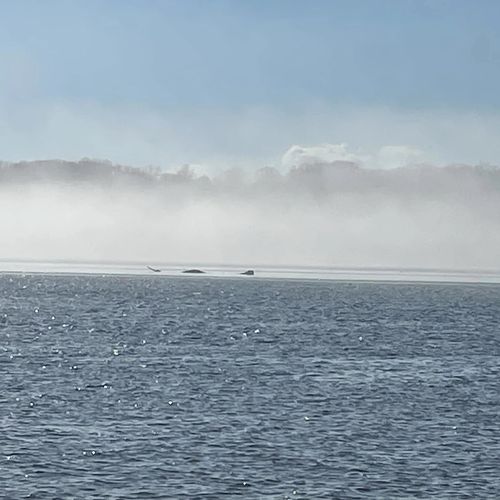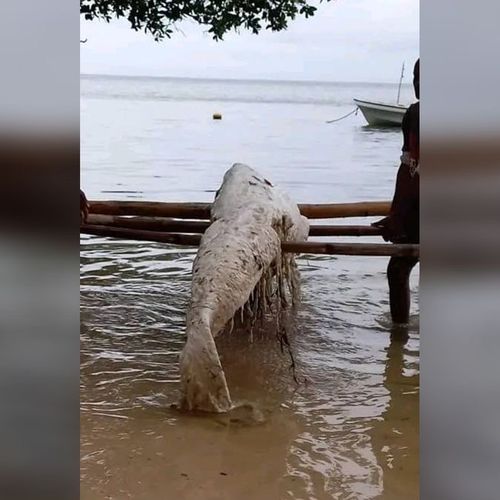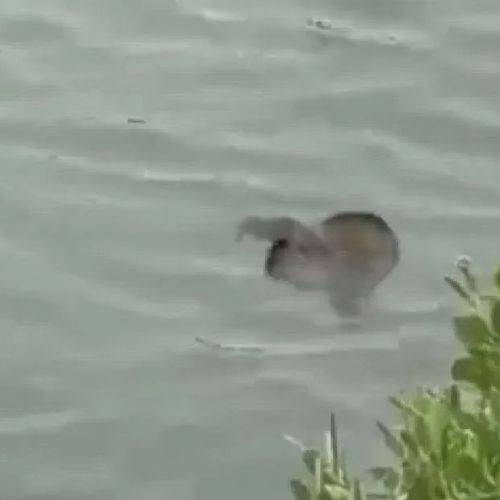| ID | #1699029999 |
| Added | Fri, 03/11/2023 |
| Author | July N. |
| Sources | |
| Phenomena | |
| Status | Hypothesis
|
Initial data
The oceans of the Earth are huge and mysterious, and during deep-sea expeditions, researchers are constantly finding new species of their inhabitants. However, the recent discovery has put scientists at a dead end.
A mysterious object, similar to the remains of some kind of golden ball or egg, was discovered on August 30 as part of the Seascape Alaska 5 expedition, which uses a remote-controlled device to map the Alaskan seabed. The team that discovered the object works for the National Oceanic and Atmospheric Administration Ocean Exploration.
"I do not know what to do with it," one of the researchers said during the live broadcast of the expedition.
Usually, scientists can at least guess how an unknown specimen combines with other species. A cursory glance at the object is enough for this, said Sam Candio, the coordinator of the expedition. But the found ball completely puzzled them.
"We need further laboratory analysis of this sample to at least begin to attribute it to any biological group"
Sam Candio
Eggshell, sponge, or something weirder
According to Candio, the researchers stumbled upon the balloon during an expedition around the chain of extinct volcanoes of the Kodiak-Bowie seamounts. For this purpose, a remotely controlled vehicle was used, which plunged to a depth of about three kilometers.
"This is a deep zone with very little data on the species that inhabit it. Therefore, we hoped that we would find something interesting and new"
Sam Candio
Team members joked that the balloon looked like something out of a horror movie. The ball could have been an eggshell or a sponge, but Candio doesn't rule out "something weirder."
"It feels thin around the edges and incredibly delicate and flaky. The center has the shape of a concave dome and is more solid than at the edges."
Sam Candio
According to Candio, researchers will need to conduct tests, including DNA, autopsy and microscopy, before they can determine which species the found ball belongs to.
"The diversity and wonders of the waters surrounding Alaska are simply breathtaking"
Sam Candio
Original news
Badacze, eksplorując głębiny oceaniczne u wybrzeży Alaski podczas ekspedycji Seascape Alaska 5, napotkali na niecodzienną niespodziankę. Za pomocą zdalnie sterowanego pojazdu podwodnego (ROV) ujawnili tajemniczy obiekt na dnie morskim - lśniącą "złotą" kulę. W kontekście dzisiejszej nauki, odkrycia takie stanowią fascynującą okazję poznania nieznanego życia na naszej planecie.
Oceany, ze swoimi trudno dostępnymi głębinami, wciąż skrywają wiele tajemnic. Niektóre z tych tajemnic obejmują niezwykłe gatunki zwierząt i roślin, podczas gdy inne, takie jak ta "złota kula", stawiają przed naukowcami zagadki do rozwiązania. Obiekt został zlokalizowany na głębokości 3,1 km i był solidnie umocowany w skalistej strukturze dna morskiego. Szczególnie intrygujące były pewne cechy obiektu, takie jak otwór w jego strukturze.
Naukowcy, zaciekawieni tym odkryciem, posłużyli się zdalnie sterowanym ramieniem robota przypominającym postać z popularnej kreskówki, aby zbadać obiekt bliżej. Pozwoliło to na dokładniejsze zbadanie struktury i analizę otaczających go materiałów. Próbki zostały później zabrane na pokład statku, gdzie poddane zostały dokładniejszej analizie.
Mimo intensywnych badań, naukowcy nadal debatują nad prawdziwą naturą tej kuli. Wstępne teorie sugerują, że może to być rodzaj gąbki, skorupka jajka czy też inne nieznane dotąd zjawisko biologiczne. Co ciekawe, brak jednoznacznych odpowiedzi podkreśla fakt, jak wiele jeszcze nie wiemy o naszych oceanach i jak wiele tajemnic wciąż czeka na odkrycie.
Ekspedycja Seascape Alaska 5, której celem było zbadanie głębin morskich poniżej 200 metrów oraz nurkowanie do 6000 metrów, koncentruje się na poznaniu głębinowych ekosystemów. Dzięki nowoczesnym technologiom i wsparciu Narodowej Administracji Oceaniczno-Atmosferycznej (NOAA), badania te są dostępne dla szerokiej publiczności dzięki transmisjom na żywo dostępnym online. To niesamowita okazja, by zanurzyć się w nieznane zakątki naszej planety bez opuszczania domu.
Odkrycie "złotej kuli" u wybrzeży Alaski stanowi kolejny dowód na to, że głębiny oceaniczne nadal skrywają wiele tajemnic. W czasach, gdy wiele regionów Ziemi zostało już zbadanych, oceany przypominają nam o nieustającej ciekawości ludzkiego ducha i pragnieniu odkrywania nieznanego. Jedno jest pewne: każde nowe odkrycie wzbogaca naszą wiedzę o świecie i przypomina o cudach, które wciąż czekają na odkrycie w najgłębszych zakątkach naszej planety.
Hypotheses
Famous creatures

There are a huge number of different living organisms on our planet. According to recent estimates, the number of species of organisms on our planet is approximately 7-10 million. However, only 15% of the data are described today.
According to the calculations of Canadians, 2.2 million species live in the world's oceans, 6.5 million on land. There are only about 7.8 million species of animals on the planet, 611 thousand fungi, and 300 thousand plants.
Investigation
Resume
Similar facts
Log in or register to post comments










